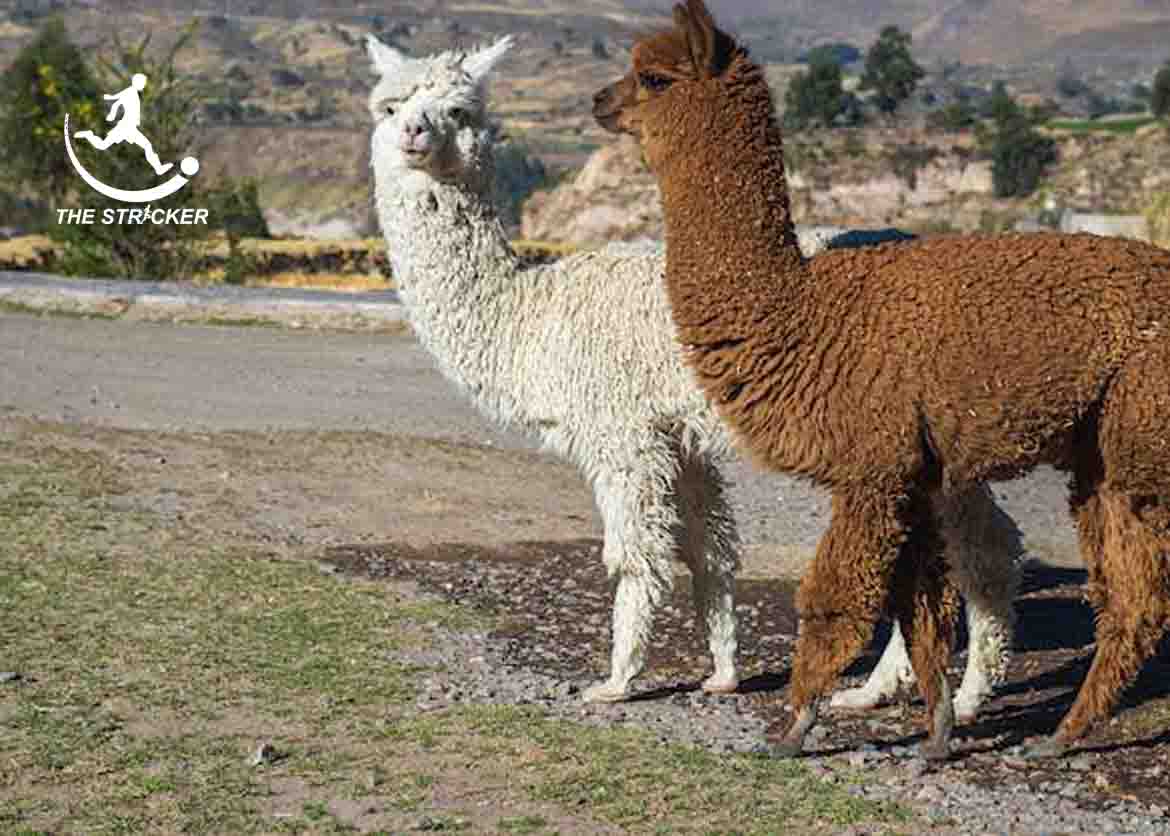
Alpaca fiber is the natural fiber harvested from an alpaca. Alpacas are a social herd animal and should be kept with others of their kind. They are gentle, inquisitive, intelligent, and observant animals. Because they are a prey animal; alpacas are very cautious and become nervous if they feel threatened.
Long ago, alpaca fiber was reserved for royalty. Today, it is sold several ways. Hand-spinners and fiber artists buy raw fleece. Knitters often purchase alpaca yarn. Fiber cooperatives mills collect alpaca fiber and process it on behalf of the producer.
History
Alpacas have been bred in Pre-Columbian, South America for over 5,000 of years. Domesticated from the Vicuñas by the ancient tribes of the Andean highlands of Ecuador, Peru, Chile, Bolivia and Northwest of Argentina. According to archaeological studies alpaca fiber was similar in quality to the wild Vicuña prior to the Spanish Conquests in the 1500s. Two-thousand-year-old Paracas textiles are thought to include alpaca fiber. Also known as “The Fiber of the Gods”, Alpaca was used to make clothing for royalty.
Read: Soybean Fiber | Characteristics and Uses |
Types of Alpaca Fiber
There are two types of alpaca: Huacaya (which produce a dense, soft, crimpy sheep-like fiber), and the Suri (with silky pencil-like locks, resembling dreadlocks but without matted fibers). Suris, prized for their longer and silkier fibers, are estimated to make up 19–20% of the North American alpaca population.
Since its import into the United States, the number of Suri alpacas has grown substantially and become more color diverse. The Suri is thought to be rarer, most likely because the breed was reserved for royalty during Incan times. Suris are often said to be less cold hardy than Huacaya, but both breeds are successfully raised in more extreme climates. They were developed in South America.
- Most alpaca fleece is from Huacaya, which have a shorter, denser, fuzzy, tight-crimp fleece; and the fiber is similar to soft Merino sheep (95% of all alpaca fleece).
- Suri alpacas have a mop-like, straight, long fleece that hangs down off their back and stomach; and the fiber is similar to fine Angora.
Read: Bamboo Fiber | Properties and Uses |
Properties of Alpaca Fleece
| Criteria | Details |
|---|---|
| Size | A mature alpaca weighs 110-170 pounds and is 34-38 inches tall at the top of the front shoulders (the withers). Crias weigh 15-19 pounds at birth. |
| Lifespan | 15-25 years, with a few living to 30 years of age. |
| The reproductive lifespan of female | 12-14 years; from 3-17 years of age approximately. |
| The reproductive lifespan of herdsire | 10-12 years; from 4-16 years of age approximately. Prime years 5-10 years of age. |
| Gestation period | 11 months. Healthy females can produce offspring at an average rate of one cria each year. |
| A number of crias born per gestation | One; multiple births are extremely rare. |
| Colors | There are more than 22 natural shades produced from the alpaca fleece ranging from white to black that is recognized and accepted by The Alpaca Registry. |
| Scientific classification |
|
| The growth rate of coat each year | 5-10 inches. |
| The weight of fleece | From mature individual each year-one to eight pounds with a few yielding up to ten pounds each year. |
| Countries of Origin | Peru, Bolivia, and Chile; first imported into the United States in 1983. |
| Population | Approximately three million worldwide, with 98 percent still living in Peru, Bolivia, and Chile. Roughly 90 percent of all alpacas are huacaya and ten percent are suri. These same percentages apply to the alpacas currently in the United States. |
Advantages Alpaca fiber:
- Superior breathability
- Wicks away body moisture, warm when wet
- Won’t mat or pill
- Naturally windproof
- Flame resistant
- Doesn’t melt
- Low static electricity
- Doesn’t hold debris
- Stain resistant
- Resists acquired odors
- Has a natural sheen
- All natural and biodegradable
Conclusion
Alpaca fleece is the natural fiber harvested from an alpaca. There are two different types of alpaca fleece. the most common fleece type comes from a Huacaya. Huacaya fiber grows and looks similar to sheep wool in that the animal looks “fluffy”. The second type of alpaca is Suri and makes up less than 10% of the South American alpaca population.
Suri fiber is more similar to natural silk and hangs off the body in locks that have a dreadlock appearance. While both fibers can be used in the worsted milling process using light weight yarn or thread, Huacaya fiber can also be used in a woolen process and spun into various weight yarns. It is a soft, durable, luxurious and silky natural fiber.
References:
